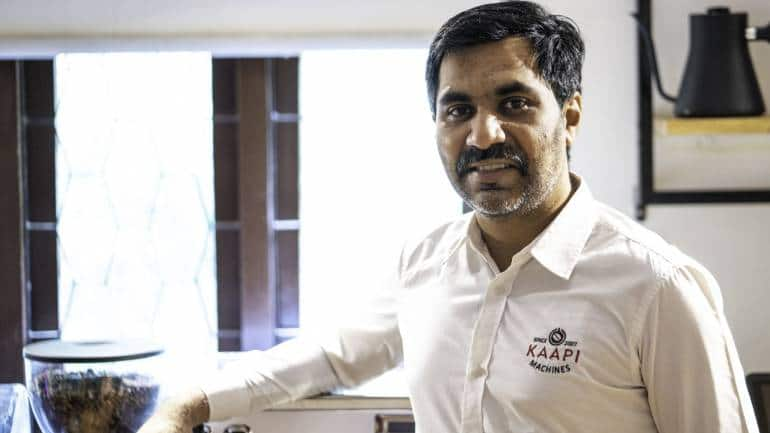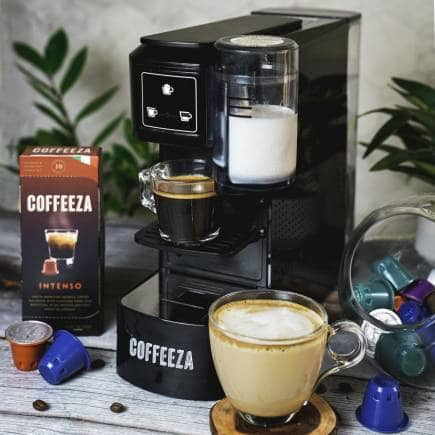



A good cup of coffee sets you up for the day.
Before the pandemic, the trend of picking up a coffee on the way to work was percolating into our routines.
Hanging out with friends over one’s favourite cuppa had already gained traction, especially among the urban millennials, a long time ago.
So when the pandemic struck in 2020, and cafés were shut amid lockdowns, our coffee rituals too were disrupted.
The purveyors of coffee expected the worst - watered-down demand. They thought consumption would go down drastically.
But strangely, the demand became more robust.
Turned out that our collective work-from-home coffee mug had a hole in the bottom. And we wanted our daily caffeine fix, no matter where we were.
Dr Pooja Jagtiani, a Mumbai-based dentist and coffee fan, said: “My consumption went up a couple of months into the pandemic."
From one cup of Bru Green Label filter coffee in the morning, Dr Jagtiani said that she has graduated to a cup, sometimes two, by noon, and then "again a cup in the evening".
That's a 200-300% increase in her personal daily consumption. What gives?
"It could be a couple of factors - staying home and having easy access to coffee. It also helps with the lethargy that sets in because of the lockdown. During the second wave, it was definitely stress-drinking, too," Dr Jagtiani said.
 Kaapi Machines elevated Abhinav Mathur as its CEO and MD in July 2021.
Kaapi Machines elevated Abhinav Mathur as its CEO and MD in July 2021.
Coffee in my shopping cart
As e-commerce and home deliveries grew during the pandemic, so did the sachets, packets, jars, bottles and cartons of coffee in them.
Bharat Sethi, founder, Rage Coffee, said, “The pandemic acted as a catalyst for us... The entire FMCG (fast-moving consumer goods) sector saw the at-home consumption of packaged food products go up.”
"At the same time, coffee or caffeine-based drinks came as a revitalizer to boost the energy levels of people who were confined to their homes. Many worked during odd hours, and coffee helped them keep energy levels up," Sethi added.
Of course, instant coffee - quick and convenient - existed before the pandemic too. As did specialty coffee, coffee pods and home espresso options. Yet, people in the business say these bloomed during lockdowns as consumers tried replicating their beloved coffee rituals at home.
Abhinav Mathur, CEO, Something's Brewing, said, “Last year saw the launch of close to 20 new specialty and new-age roaster brands, the highest ever in any year, along with at least 10 new specialty café brands and finally, close to five home-brewing equipment portals.”
To be sure, home-grown companies that roast, blend, package coffee have been around for decades. As have different types of coffee - and coffee packaging. What's noteworthy is that a tough year notwithstanding, upward growth for coffee was still visible.
During the lockdown last year, Rage Coffee clocked a fourfold increase in online and offline sales, with a 300% surge in sales. Coffeeza grew by 125% from FY 2019-20 to FY 2020-21 and Maverick & Farmer about 35%, from April 2020 to July 2021, according to the company spokesperson.
Ashish D’Ábreo, founder-partner, Maverick & Farmer Coffee Roasters, reiterated: “A lot of interest was seen in our online store and marketplaces, for easy home-brewing equipment. Consumption of our home-brewing videos, recipes also increased.”
 Ashish D'Ábreo, Partner, Maverick & Farmer.
Ashish D'Ábreo, Partner, Maverick & Farmer.
Better at-home machines allowed consumers to recreate the coffee experience previously only available from a professional barista. Desperate for a good cuppa, many ordered these online.
Kaapi Machines, witnessed their highest ever sales of small roasting and coffee grinding equipment, mostly sold to new-age coffee roasters and brands. Innovation and experimentation was done by D2C (direct to customer) brands, both towards cold brew and specialty coffee, through the emergence of new speciality coffee chains.
A shift in the way coffee lovers drink, perceive and prefer their coffee, is evident, albeit at home, and that spurred on the coffee companies.
Rahul Aggarwal, founder, Cravium Gourmet (Coffeeza®), explained, “Indians today are actually quite experimental. There are a lot of reasons - rising incomes, availability of gourmet food choices, exposure to western cultures and the tempting posts on social media. For lovers of espresso-based coffee beverages (latte, cappuccino, americano), we already had excellent capsule coffee machines and coffee capsules... But we were missing a solution for lovers of pour-over / filter style of coffee. Hence, we decided to launch our pour-over bags.”
 Rahul Aggarwal, founder, Cravium Gourmet.
Rahul Aggarwal, founder, Cravium Gourmet.
New product launches continued unabated. According to D’Ábreo, even though café sales came to a halt, a sizeable and instantaneous growth for their B2C direct to home business was seen. They launched three Maverick & Farmer, Coffee micro-lots - Orange you Curious, Ol’Smoky and Milk & Honey.
Something's Brewing, an e-commerce site for everything coffee, launched during the pandemic with a vision to build a good coffee tribe and coffee culture in India. It has launched manual coffee brewing tools, accessories and a community space for coffee aficionados.
Focus on brewing education, creating products that are a close match for the café coffee, developing products that make working from home easier, is what has helped coffee companies woo coffee-lovers during the pandemic.
Should cafes view increased at-home consumption as a threat to their businesses? Not really. Café businesses have been running through online orders which is helping sustain operational continuity for many. Take-aways and deliveries will continue even when things open up, as people want to avoid crowds.
“Coffee-lovers are turning home-brewers, not just to seek better value, but also to experiment with many types of coffee roasts and try different brew methods. This trend is likely to continue witnessing a very sharp growth,” said Mathur.

Discover the latest Business News, Sensex, and Nifty updates. Obtain Personal Finance insights, tax queries, and expert opinions on Moneycontrol or download the Moneycontrol App to stay updated!
Find the best of Al News in one place, specially curated for you every weekend.
Stay on top of the latest tech trends and biggest startup news.